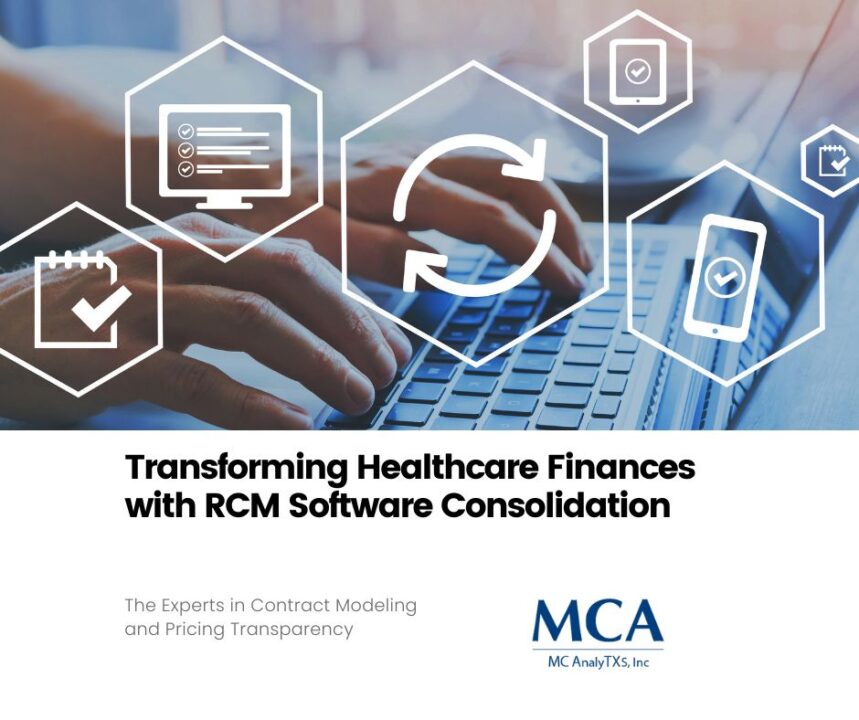
Reversing the Tide: A Proven Plan to Slash Your Denial Rates by 72%
February 7, 2024
Preventing Denials: Enhancing Cash Flow and Patient Experience
February 12, 2024In the labyrinth of healthcare financial operations, revenue cycle management (RCM) is the unsung hero that bridges the gap between patient care and fiscal sustainability. It’s a complex dance of billing, claim processing, and payment collections that, when executed flawlessly, can inject vitality into a healthcare organization’s financial health. Yet, the dance is often riddled with missteps, leading to denied claims and payment delays that can significantly erode the revenue flow. So how can revenue cycle managers ensure that every claim is navigated and resolved effectively, delivering the financial stability that healthcare institutions need?
The Predicament of Revenue Cycle Management
The revenue cycle is a delicate network where each phase impacts the next, much like dominos — a misalignment in one section can topple the rest. The complexity is amplified by the unique challenges of healthcare billing. Unlike retail or manufacturing, healthcare transactions are not just about goods and services; they carry the weight of human health, regulatory stipulations, and insurance complexities.
Denial management is one of the most intricate yet crucial aspects of RCM. Every denied claim represents a lost opportunity to accrue revenue, as well as the resources and time needed to resubmit and potentially appeal the claim. The reasons for denials vary, from inaccurate patient information to discrepancies in the billed and provided services.
To navigate these challenges effectively, revenue cycle managers and their teams must adopt a holistic approach that integrates people, processes, and technology.
People First: Nurturing a High-Performance Team
While the adage “It’s not personal, it’s business” may be appropriate in some sectors, in healthcare revenue management, the personal is the business. Investing in a skilled and engaged team is the linchpin of a robust revenue cycle strategy. Training, continuous education, and a collaborative work environment are essential components for success.
Cultivating a Culture of Continuous Learning
The intricacy and dynamic nature of healthcare billing and coding demand a commitment to ongoing education. Managers must provide their teams with the tools to stay abreast of the latest regulations, coding updates, and best practices. This investment pays dividends in the form of reduced errors, improved efficiency, and a capacity to adapt to changes in the industry.
Technology as an Enabler, Not a Replacement
While tech solutions may promise to automate away the intricacies of revenue cycle management, the human element remains irreplaceable. Technology should be viewed as an enabler that amplifies human capabilities, providing analytics, workflow integration, and decision support. Revenue cycles can only be as efficient as the people managing and overseeing them.
Processes and Protocols: The Backbone of RCM
Efficiency in RCM hinges on having crystal-clear processes that guide every step of the revenue cycle. These processes should be adaptable enough to accommodate shifts in regulations and insurer requirements while being robust enough to ensure compliance and consistency in billing and collections.
Streamlining Claim Submission
One of the greatest deterrents to efficient RCM is the submission of inaccurate claims. This can result from a variety of factors, such as overlooked documentation requirements or coding errors. By implementing a robust system of checks and balances, including regular audits and quality control measures, organizations can significantly reduce the likelihood of submission-related denials.
Proactive Denials Management
Managers need to foster a proactive approach to denials management. This includes robust reporting mechanisms to monitor denial rates, categorize reasons for denials, and implement strategies to address root causes. By staying ahead of potential issues, organizations can prevent denials before they happen, rather than simply reacting after the fact.
Technology: The New Frontier in RCM
The role of technology in modern RCM cannot be overstated. Innovative software, AI-driven analytics, and interoperable systems allow for enhanced visibility into the revenue cycle. This, in turn, empowers managers to make informed decisions quickly, identify areas of inefficiency, and automate repetitive tasks to increase overall productivity.
Leveraging Data Analytics
Analyze, adapt, and act — this mantra encapsulates the power of advanced analytics in RCM. Data-driven insights can uncover trends, predict payer behavior, and offer intelligence to refine billing strategies. Real-time dashboards that visualize key performance indicators (KPIs) allow for an agile response to changes in the revenue cycle’s health.
Integration and Interoperability
Disparate systems can be the bane of a revenue cycle’s existence. Integrated platforms that facilitate the seamless flow of information among billing, coding, and accounting departments reduce the risk of errors and omissions. This interoperability streamlines operations, from patient registration to final account resolution.
The Path Forward: A No-Nonsense Plan for RCM Stability
Implementing a comprehensive approach to RCM management is a significant undertaking, but one that pays dividends in the form of financial stability and operational excellence. To carve out a plan that ensures coverage for all claims, consider the following steps:
Step 1: Assess Your Current State
An honest assessment of your current revenue cycle practices is the first step towards improvement. Identify areas of strength and weaknesses, acknowledging the root causes of past denials.
Step 2: Define Clear Objectives
Set SMART (Specific, Measurable, Achievable, Relevant, Time-bound) objectives for your RCM improvement plan. Are you aiming to reduce denials by a certain percentage? Or improve clean claim rates? Be explicit in what you aim to achieve.
Step 3: Engage Stakeholders
For any strategy to succeed, buy-in from all stakeholders is crucial. Engage front-line staff, leadership, and technology partners in the development and execution of your RCM plan.
Step 4: Ingrain Best Practices
Educate your team on industry best practices, encouraging a peer-to-peer learning approach. Implement regular training sessions and hold staff accountable for following prescribed procedures.
Step 5: Adopt Robust Technologies
Invest in technologies that offer scalability and adaptability. Look for solutions that provide end-to-end support for the revenue cycle, from patient engagement to payer management.
Step 6: Monitor and Adapt
Continuous monitoring of key performance indicators is vital in RCM. Regularly review your processes and technologies, making adjustments as needed to maintain optimum performance.
In Summary: A Call to Action for RCM Excellence
The dynamics of healthcare financing will continue to evolve, challenging revenue cycle managers to keep pace with an ever-shifting landscape. By championing a people-first approach, fortifying processes, and protocols, and leveraging cutting-edge technology, revenue cycle managers can establish solid foundations for comprehensive coverage of all claims — ensuring that their organization thrives in an environment of financial volatility. Embrace this no-nonsense plan for RCM stability, and watch as your revenue cycle transforms from a source of uncertainty to a pillar of sustainability.
To learn more in-depth strategies and to connect with our experts Join our upcoming webinar on Thursday, Feb. 22nd at 1 pm CST.





